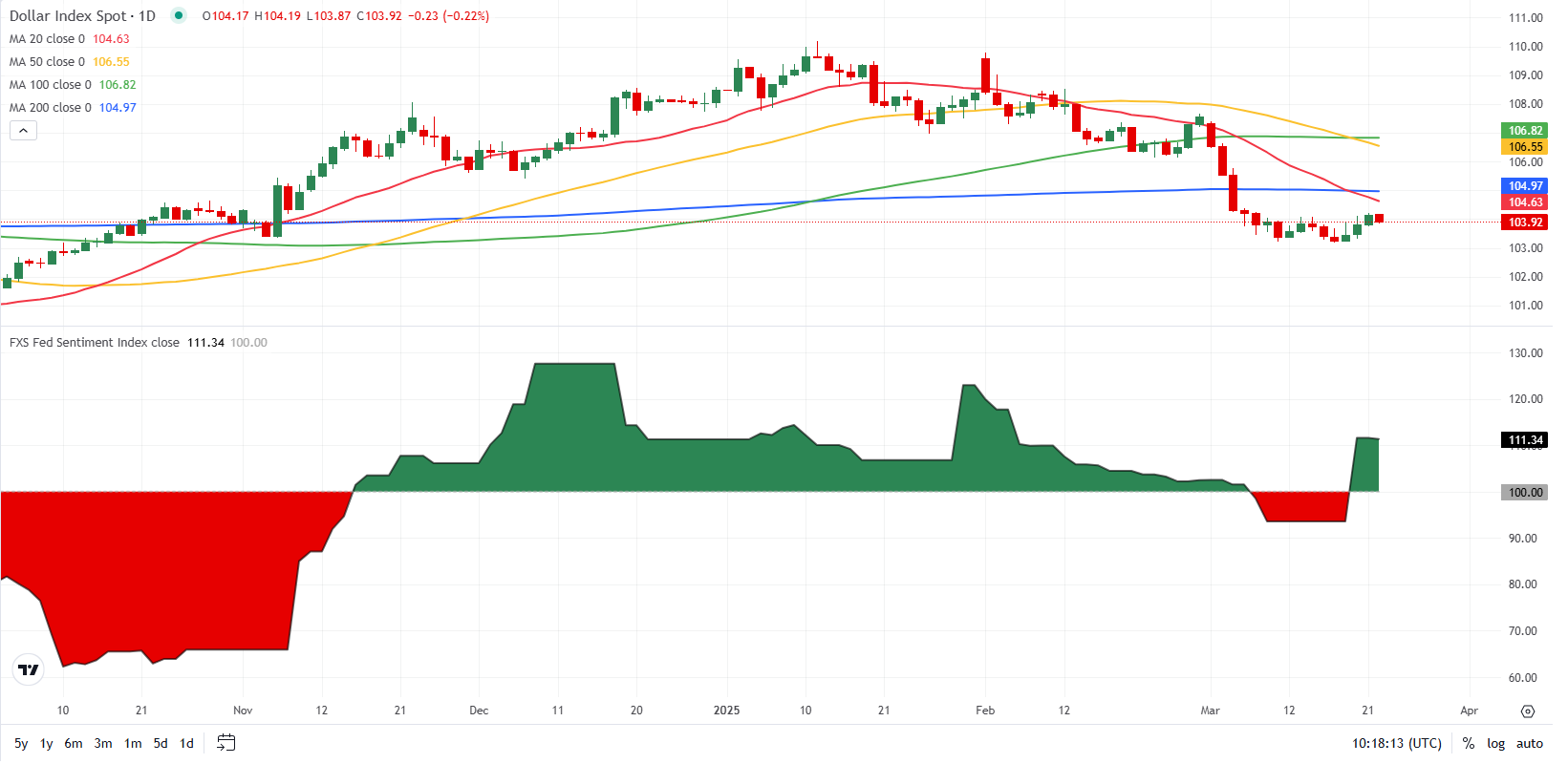FXS Fed Sentiment Index recovers into hawkish territory following March meeting
- FXStreet Fed Sentiment Index rises into hawkish territory above 100.
- Fed left the policy rate unchanged following the March policy meeting.
- Markets see a less-than-20% probability of a Fed rate cut in May.
The Federal Reserve (Fed) announced that it left the interest rate unchanged at 4.25%-4.5% after the march 18-19 policy meeting. The revised Summary of Economic Projections showed that policymakers were still projecting a total of 50 basis points (bps) reduction in the interest rate in 2025.
While speaking in the post-meeting press conference, Fed Chairman Jerome Powell reiterated that the central bank will not be in a hurry to move on rate cuts, adding that they can maintain policy restraint for longer if the economy remains strong.
Commenting on the policy outlook, Chicago Fed President Austan Goolsbee told CNBC that the Fed needs to be a steady hand and take the long view on the economy. Similarly, NY Fed President John Williams noted that there is a lot of uncertainty in the economy, adding that they are not in a hurry to make the next monetary policy decision.
According to the CME FedWatch Tool, markets are currently pricing in about a 15% probability of a 25 bps rate cut in May.
Meanwhile, FXStreet (FXS) Fed Sentiment Index rose above 110 after dipping below 100 just before the Fed's blackout period started, highlighting a hawkish tilt in the Fed's overall language. This coincided with a three-day recovery in the US Dollar (USD) Index.

Fed FAQs
Monetary policy in the US is shaped by the Federal Reserve (Fed). The Fed has two mandates: to achieve price stability and foster full employment. Its primary tool to achieve these goals is by adjusting interest rates. When prices are rising too quickly and inflation is above the Fed’s 2% target, it raises interest rates, increasing borrowing costs throughout the economy. This results in a stronger US Dollar (USD) as it makes the US a more attractive place for international investors to park their money. When inflation falls below 2% or the Unemployment Rate is too high, the Fed may lower interest rates to encourage borrowing, which weighs on the Greenback.
The Federal Reserve (Fed) holds eight policy meetings a year, where the Federal Open Market Committee (FOMC) assesses economic conditions and makes monetary policy decisions. The FOMC is attended by twelve Fed officials – the seven members of the Board of Governors, the president of the Federal Reserve Bank of New York, and four of the remaining eleven regional Reserve Bank presidents, who serve one-year terms on a rotating basis.
In extreme situations, the Federal Reserve may resort to a policy named Quantitative Easing (QE). QE is the process by which the Fed substantially increases the flow of credit in a stuck financial system. It is a non-standard policy measure used during crises or when inflation is extremely low. It was the Fed’s weapon of choice during the Great Financial Crisis in 2008. It involves the Fed printing more Dollars and using them to buy high grade bonds from financial institutions. QE usually weakens the US Dollar.
Quantitative tightening (QT) is the reverse process of QE, whereby the Federal Reserve stops buying bonds from financial institutions and does not reinvest the principal from the bonds it holds maturing, to purchase new bonds. It is usually positive for the value of the US Dollar.


